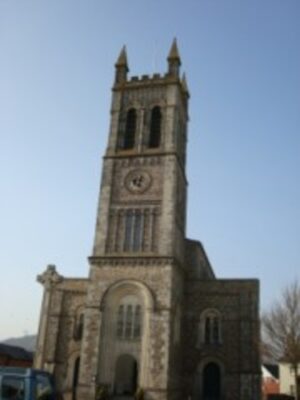
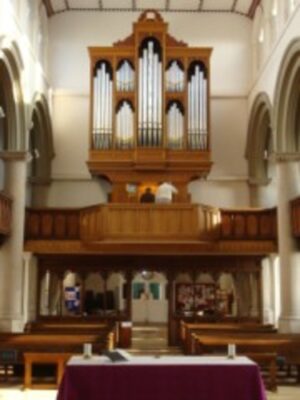
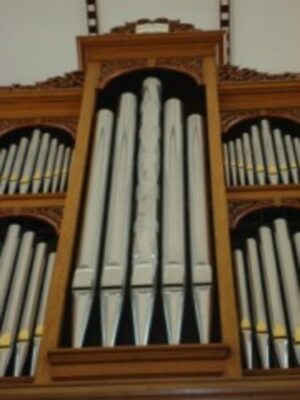
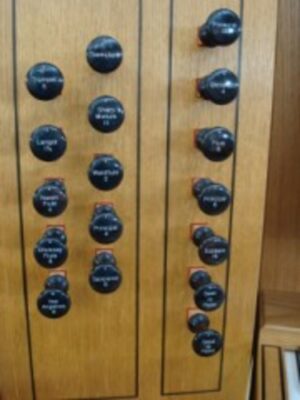
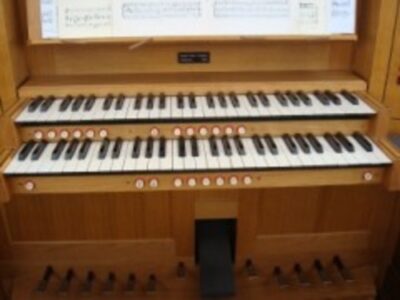
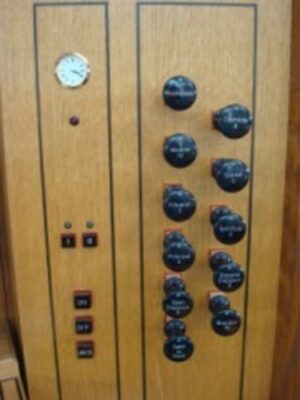
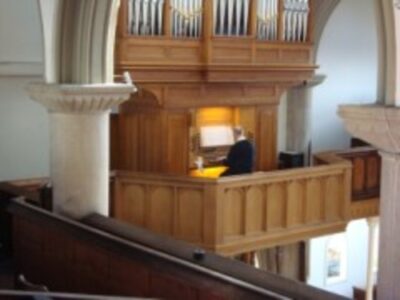
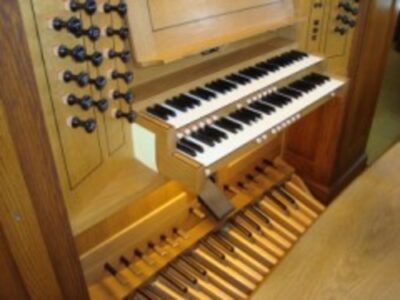

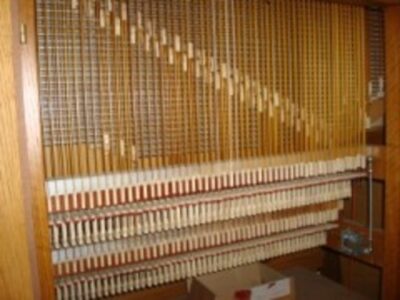
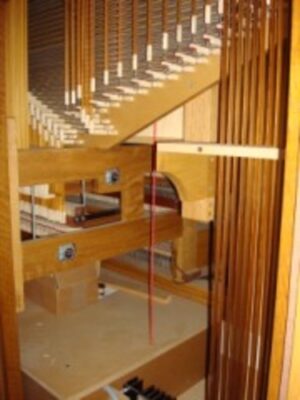
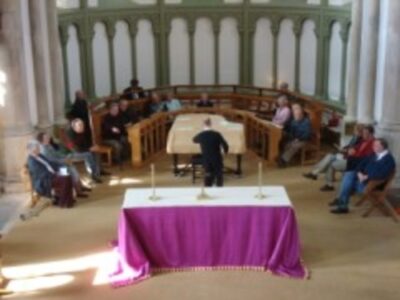
The Church
St. Paul’s Church was built in 1835 and was consecrated by Bishop Henry Philpotts, Bishop of Exeter, in 1838. It is built of local chert and Beer stone and was designed by Charles Fowler of London in the Norman style. Owing to the orientation of the site on which it stands, the Church actually lies North-South. It is 132 feet in length and 58 feet in breadth. The tower, which is a conspicuous landmark in the Otter valley, is 104 feet high and accommodates a clock made by Matthew Murch of Honiton in 1851.
The Organ
The chosen organbuilder was Kenneth Tickell of Northampton who writes:
‘…the importance of good positioning for organs is now widely appreciated. St. Paul’s is to be congratulated on providing a perfect setting for their new instrument. Like all our organs it has mechanical (tracker) action to the keys and pedals. The case is made of American Oak, the rounded arches of the church being the obvious inspiration for the design. The polished front pipes, including the unusual embossed central pipe, are made of 70% tin, whilst those inside are alloys of tin and lead, as well as poplar wood.’
The Great division stands in the centre at the first level, the Pedal section is divided on either side of the Great. High above the Great is the Swell box with its pipes inside. This is the traditional ‘werk-prinzip’ layout of many European organs of the 17th and 18th centuries and the most desirable from an organ builders angle.
All ranks are independent except the Bass Flute on the pedal, extended from the Subbass. There is electric action to the stops and piston controls, together with a two level memory for stop combinations. In addition to the six thumb pistons for both manual divisions, four for the Pedals and six generals, it is possible to programme any one or every one of those 22 combination pistons to act as general pistons, covering all the stops.
